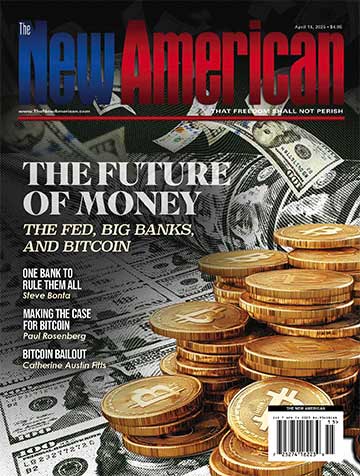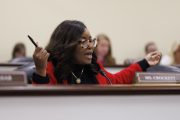
The Biden Regime and its auxiliary army of Branch Covidians lost one and won one today as regards the regime’s unconstitutional mandates to force Americans to submit to a morally problematic and potentially deadly China Virus vaccine.
Ruling 6-3, the court upheld a lower court stay on the mandate from the Occupational Health and Safety Administration that sought to force vaccinate 84 million Americans who work for businesses of more than 100 employees. If you work for a big company, OSHA cannot force the company to get you jabbed.
Ruling 5-4, the court overturned a similar stay that blocked the regime from forcing vaccines on 22 million healthcare workers employed by federally subsidized medical facilities. If you work for a hospital, the executive branch of the federal government can force the hospital to get you jabbed.
Both rulings were straightforward. In the second, Associate Justice Brett Kavanaugh disappointed conservatives by siding with the leftist regime that does not believe in freedom of choice in medical therapy. So did Chief Justice John Roberts.
OHSA Ruling
“Applicants are likely to succeed on the merits of their claim that the Secretary [of Labor] lacked authority to impose the mandate. Administrative agencies are creatures of statute,” the court ruled:
They accordingly possess only the authority that Congress has provided. The Secretary has ordered 84 million Americans to either obtain a COVID-19 vaccine or undergo weekly medical testing at their own expense. This is no “everyday exercise of federal power.” It is instead a significant encroachment into the lives — and health — of a vast number of employees.
Catching the China virus is not an occupational hazard in most jobs, the court ruled, and so the secretary has no authority to mitigate those hazards with a sweeping mandate.
“COVID-19 can and does spread at home, in schools, during sporting events, and everywhere else that people gather,” the court continued. “That kind of universal risk is no different from the day-to-day dangers that all face from crime, air pollution, or any number of communicable diseases.”
Yet a key point in the ruling is that the vaccination cannot be undone, as might another emergency measures OSHA might impose:
Permitting OSHA to regulate the hazards of daily life — simply because most Americans have jobs and face those same risks while on the clock — would significantly expand OSHA’s regulatory authority without clear congressional authorization.
[A] vaccine mandate is strikingly unlike the workplace regulations that OSHA has typically imposed. A vaccination, after all, “cannot be undone at the end of the workday.” Contrary to the dissent’s contention, imposing a vaccine mandate on 84 million Americans in response to a worldwide pandemic is simply not “part of what the agency was built for.”
But that does not mean OSHA has no power to regulate occupational safety where the “virus poses a special danger,” such as it might with researchers, or those who toil in crowded businesses. Problem is, “the danger present in such workplaces differs in both degree and kind from the everyday risk of contracting COVID-19 that all face,” the court continued:
OSHA’s indiscriminate approach fails to account for this crucial distinction — between occupational risk and risk more generally—and accordingly the mandate takes on the character of a general public health measure, rather than an “occupational safety or health standard.”
And so, Congress’ delegation of regulatory power to OHSA “has not given that agency the power to regulate public health more broadly,” the court ruled:
Requiring the vaccination of 84 million Americans, selected simply because they work for employers with more than 100 employees, certainly falls in the latter category.
In short, the court’s rationale is not that the federal government cannot impose a mandate, but that Congress has not authorized it. Thus, the mandate would be constitutional if Congress did authorize it, even though the Constitution confers no such power.
Roberts, along with justices Samuel Alito, Amy Coney Barrett, Neil Gorsuch, Kavanaugh, and Clarence Thomas were the majority. Leftists Elena Kagan, Sonia Sotomayor, and Stephen Breyer dissented.
Health Workers Jabbed
In ruling for the regime in the second case, the court agreed that the diktat from the Health and Human Services Secretary “falls within the authorities that Congress has conferred upon him.”
That’s because “Congress has authorized the Secretary to impose conditions on the receipt of Medicaid and Medicare funds that ‘the Secretary finds necessary in the interest of the health and safety of individuals who are furnished services.’”
If you take federal money, you take federal authority:
COVID-19 is a highly contagious, dangerous, and — especially for Medicare and Medicaid patients — deadly disease. The Secretary of Health and Human Services determined that a COVID-19 vaccine mandate will substantially reduce the likelihood that healthcare workers will contract the virus and transmit it to their patients. He accordingly concluded that a vaccine mandate is “necessary to promote and protect patient health and safety” in the face of the ongoing pandemic.
The mandate falls inside statutory ambit because “providers take steps to avoid transmitting a dangerous virus to their patients is consistent with the fundamental principle of the medical profession: first, do no harm,” the court ruled, citing multiple federal regulations:
It would be the “very opposite of efficient and effective administration for a facility that is supposed to make people well to make them sick with COVID-19.” …
[H]ealthcare facilities that wish to participate in Medicare and Medicaid have always been obligated to satisfy a host of conditions that address the safe and effective provision of healthcare, not simply sound accounting. Such requirements govern in detail, for instance, the amount of time after admission or surgery within which a hospital patient must be examined and by whom, the procurement, transportation, and transplantation of human kidneys, livers, hearts, lungs, and pancreases,the tasks that may be delegated by a physician to a physician assistant or nurse practitioner, and, most pertinent here, the programs that hospitals must implement to govern the “surveillance, prevention, and control of … infectious diseases.”
The HHS secretary is not a “mere bookkeeper,” the court ruled, but instead a political authority who tightly controls every jot and tittle of hospital procedures.
As for the virus itself, the court admitted that the mandate goes well beyond what the government has mandated in the past:
But he has never had to address an infection problem of this scale and scope before. In any event, there can be no doubt that addressing infection problems in Medicare and Medicaid facilities is what he does.
And his response is not a surprising one. Vaccination requirements are a common feature of the provision of healthcare in America: Healthcare workers around the country are ordinarily required to be vaccinated for diseases such as hepatitis B, influenza, and measles, mumps, and rubella. …
[T]he Secretary did not exceed his statutory authority in requiring that, in order to remain eligible for Medicare and Medicaid dollars, the facilities covered by the interim rule must ensure that their employees be vaccinated against COVID-19.
The court ruled that the mandate is not “arbitrary and capricious,” as opponents claimed:
The challenges posed by a global pandemic do not allow a federal agency to exercise power that Congress has not conferred upon it. At the same time, such unprecedented circumstances provide no grounds for limiting the exercise of authorities the agency has long been recognized to have.
And so the court gave Biden the power to force vaccinations on 22 million health-care workers.
Alito, Barrett, Gorsuch, and Thomas dissented.




